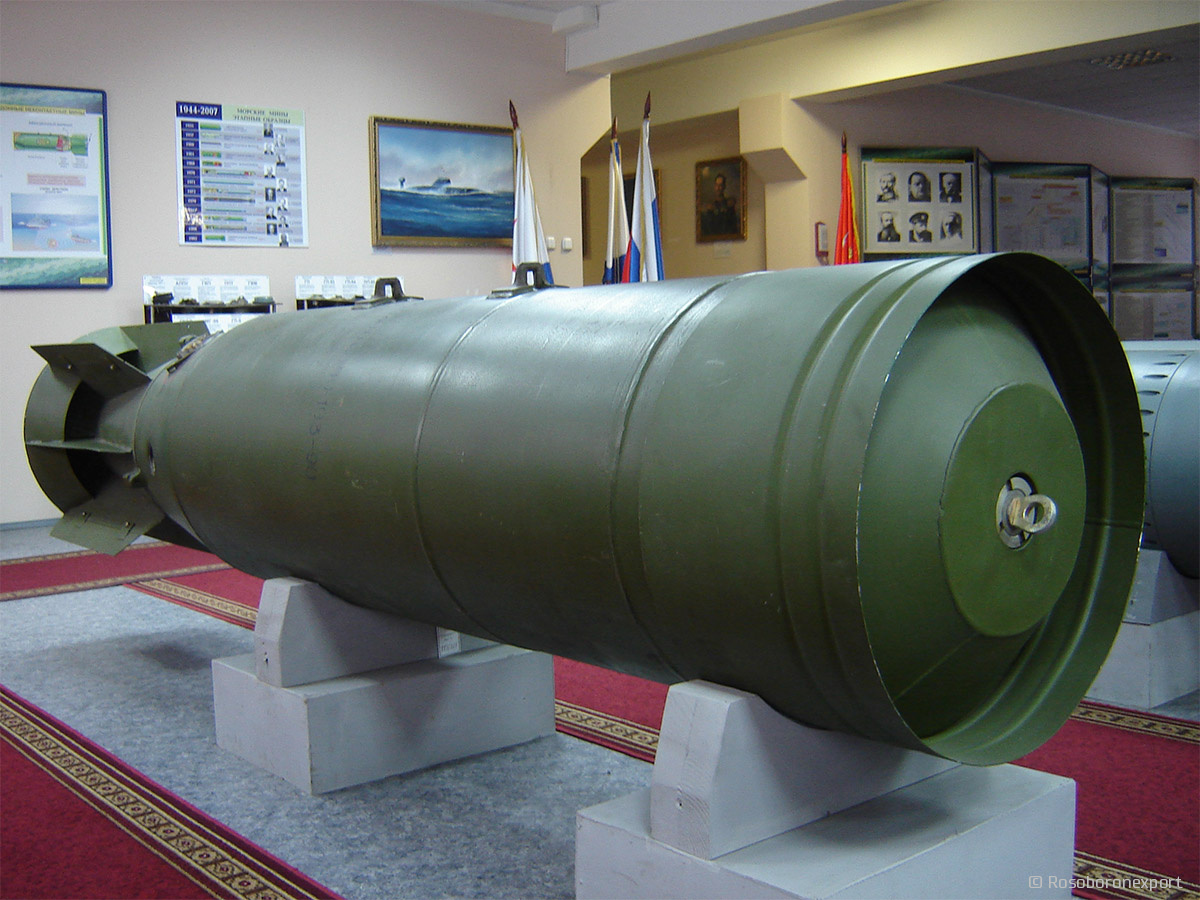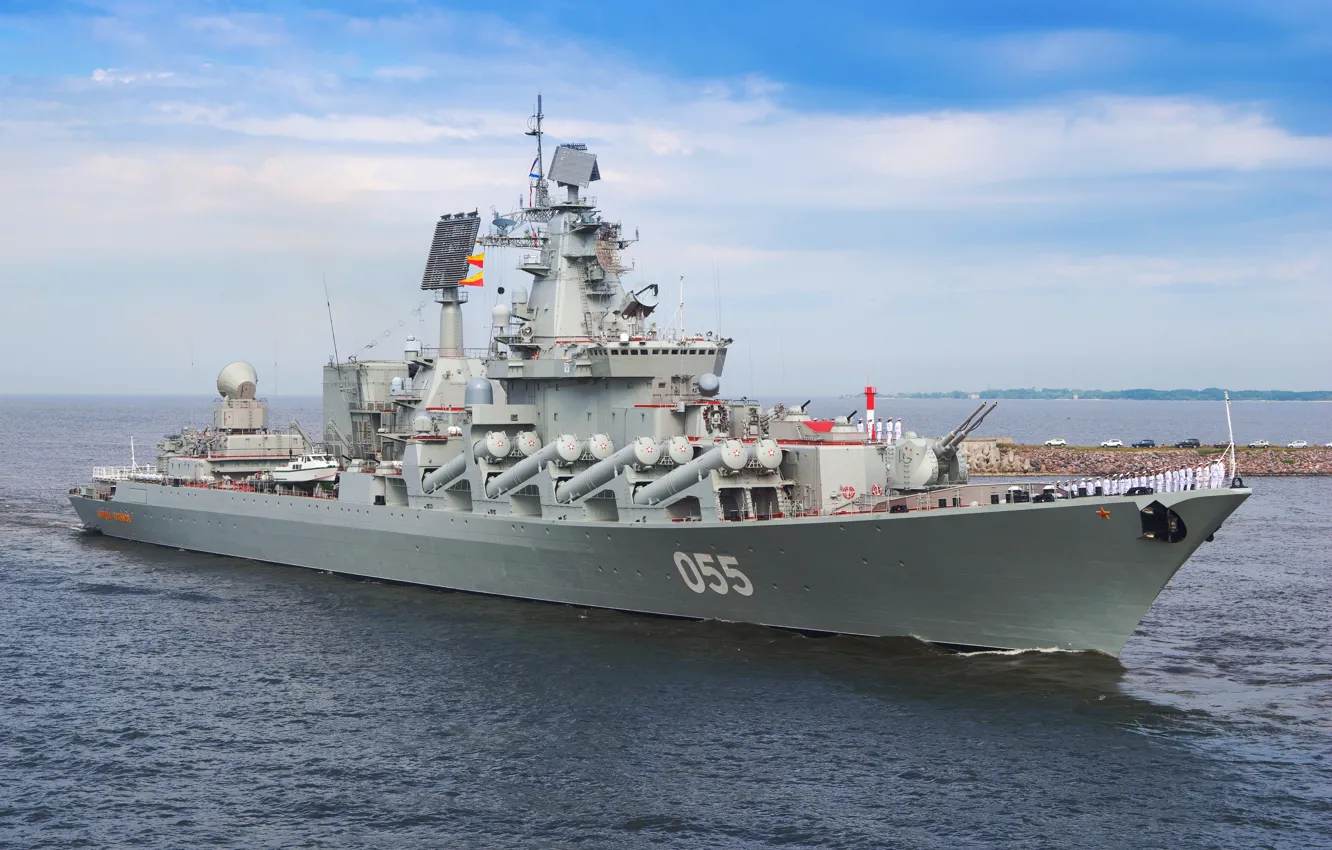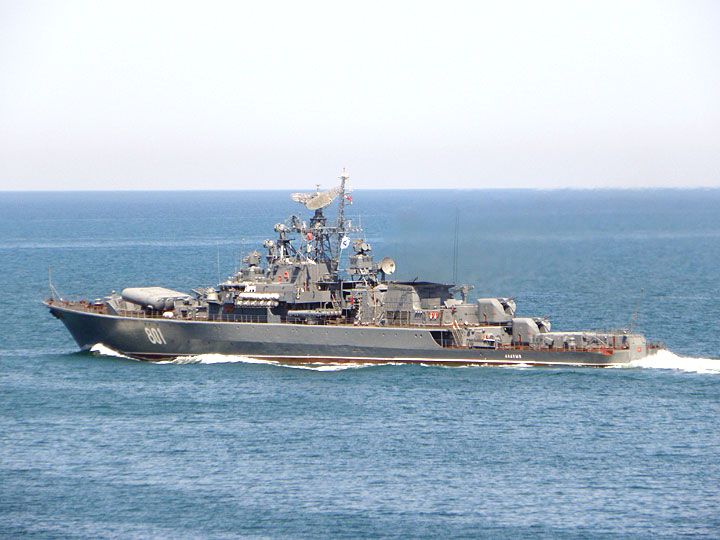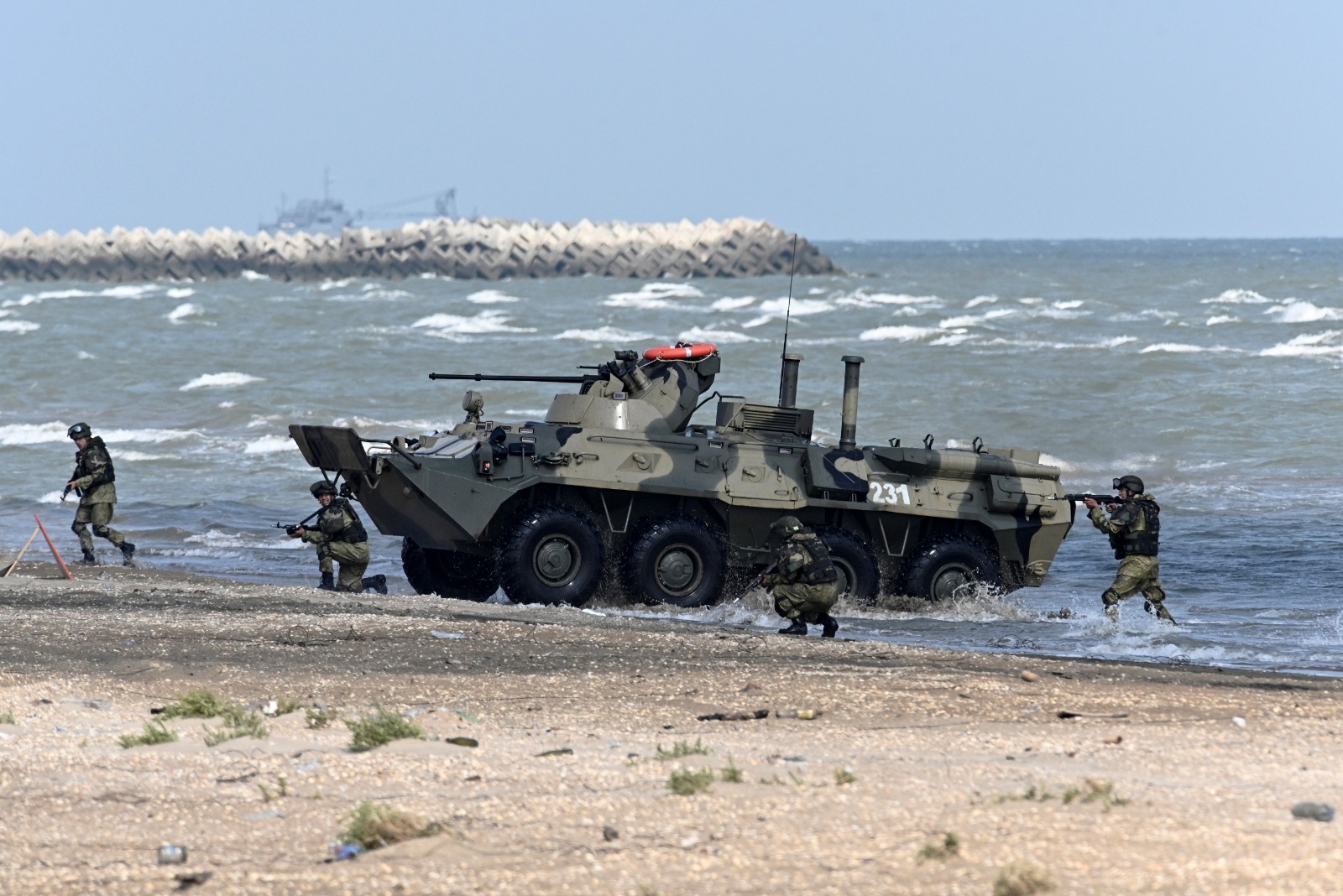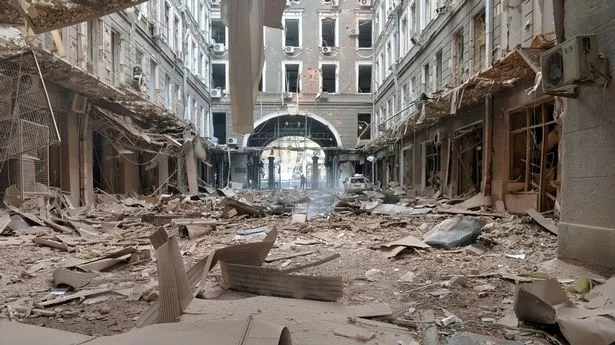Alex
Kingdom of Greece
- Apr 16, 2019
- 4,925
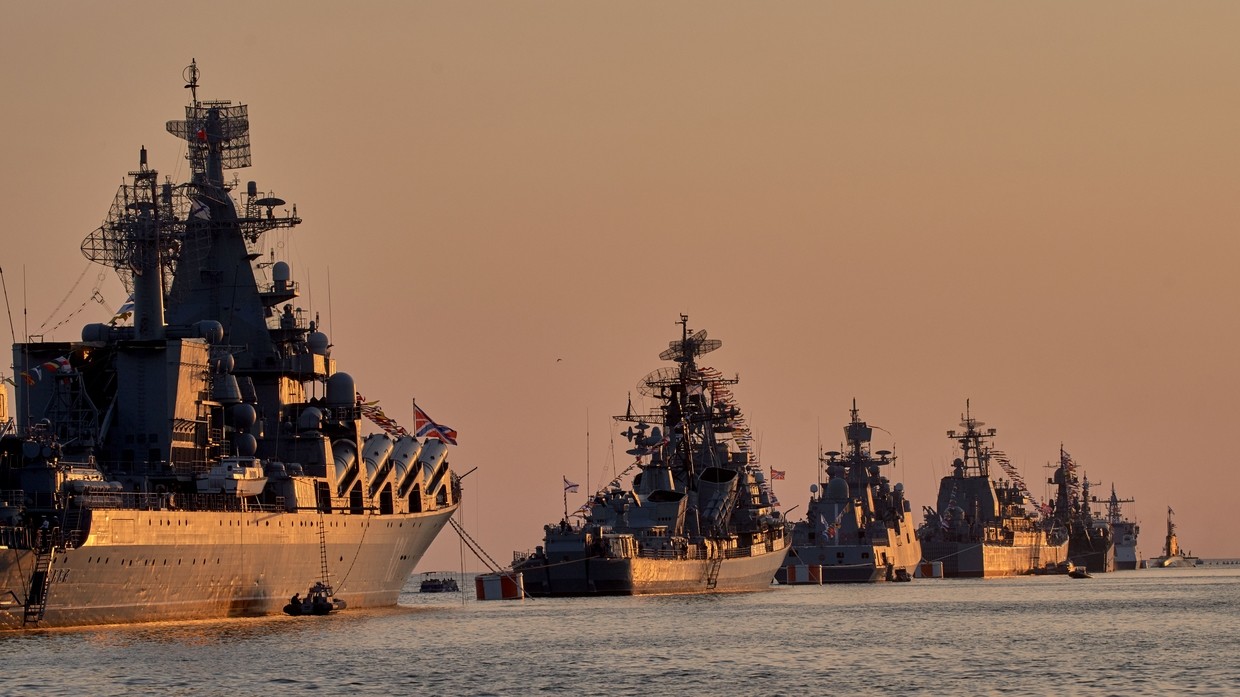
Black Sea Fleet Near Sevastopol Naval Base |
Operation: CHERNOYE Turkish-Israeli Conflict Classified & Encrypted "God Give Us Strength, Give Us Courage, and When It Is All Over, Forgive Us." |
| Operation Information |
|---|
The nation of Turkey has been considered a rogue nation for some time now, one of great risk to the stability of the region - especially the Middle East. However, recently, this nation has become hostile. With treaths of invading Israel and their recent murder of ~9,000 Jews in Turkey, Her Imperial Majesty Chaterine III has ordered for the entire Black Sea Fleet to remain on high alert and be ready to sail off to war at a moment's notice. It was also planned to have various patrol units patrolling the Black Sea, alongside potentially sending out the squadron of Vishnya-class intelligence collection ships to collect information against the nation of Turkey. Additionally, if required, the Naval Infantry, Space Forces, and Air Force would be placed on alert to join this operation and potentially go to war. All vessels would be fully fueled, fully supplied, and fully armed - but would remain in their ports until further notice. |
| Deployed Forces | Opposition Forces |
|---|---|
Novorossiysk Naval Base
4th Submarine Squadron HIMS Alrosa (Kilo-class Submarine) x52 Submariners x6 533mm Torpedo Tubes x9 VA-111 Shkval Supercavitating Torpedoes x9 Type 53-65 Torpedoes x8 Strela-2 Man-Portable Air Defense System x16 Strela-2 Missiles HIMS Novorossiysk (Kilo-class Submarine) x52 Submariners x6 533mm Torpedo Tubes x9 VA-111 Shkval Supercavitating Torpedoes x9 Type 53-65 Torpedoes x8 Strela-2 Man-Portable Air Defense System x16 Strela-2 Missiles HIMS Rostov na Donu (Kilo-class Submarine) x52 Submariners x6 533mm Torpedo Tubes x9 VA-111 Shkval Supercavitating Torpedoes x12 MDM-2 Mines x8 Strela-2 Man-Portable Air Defense System x16 Strela-2 Missiles HIMS Staryy Oskol (Kilo-class Submarine) x52 Submariners x6 533mm Torpedo Tubes x9 VA-111 Shkval Supercavitating Torpedoes x12 MDM-2 Mines x8 Strela-2 Man-Portable Air Defense System x16 Strela-2 Missiles HIMS Krasnodar (Kilo-class Submarine) x52 Submariners x6 533mm Torpedo Tubes x9 VA-111 Shkval Supercavitating Torpedoes x12 MDM-2 Mines x8 Strela-2 Man-Portable Air Defense System x16 Strela-2 Missiles HIMS Vlikiy Novgorod (Kilo-class Submarine) x52 Submariners x6 533mm Torpedo Tubes x9 VA-111 Shkval Supercavitating Torpedoes x12 MDM-2 Mines x8 Strela-2 Man-Portable Air Defense System x16 Strela-2 Missiles 71st Light Warfare Squadron HIMS Yeysk (Grisha V-class Corvette) x89 Sailors x1 Twin SA-N-4 Gecko SAM Launcher x20 9M33M Missiles x2 Twin SA-N-8 Gremlin Air Defense Missile Systems x8 9M36 Missiles x1 76mm AK-106 Naval Gun x304 Rounds x1 AK-630 CIWS x3,000 Rounds x2 Twin 533mm Torpedo Tubes x6 Type-53 USET-80 Torpedoes x2 RBU-6000 Anti-Submarine Rocket Launchers x40 111SG Depth-Charge Rockets x40 111SZ Mine-Laying Rockets x16 111SO Decoy Rockets HIMS Kasimov (Grisha V-class Corvette) x89 Sailors x1 Twin SA-N-4 Gecko SAM Launcher x20 9M33M Missiles x2 Twin SA-N-8 Gremlin Air Defense Missile Systems x8 9M36 Missiles x1 76mm AK-106 Naval Gun x304 Rounds x1 AK-630 CIWS x3,000 Rounds x2 Twin 533mm Torpedo Tubes x6 Type-53 USET-80 Torpedoes x2 RBU-6000 Anti-Submarine Rocket Launchers x40 111SG Depth-Charge Rockets x40 111SZ Mine-Laying Rockets x16 111SO Decoy Rockets HIMS Povorino (Grisha V-class Corvette) x89 Sailors x1 Twin SA-N-4 Gecko SAM Launcher x20 9M33M Missiles x2 Twin SA-N-8 Gremlin Air Defense Missile Systems x8 9M36 Missiles x1 76mm AK-106 Naval Gun x304 Rounds x1 AK-630 CIWS x3,000 Rounds x2 Twin 533mm Torpedo Tubes x6 Type-53 USET-80 Torpedoes x2 RBU-6000 Anti-Submarine Rocket Launchers x40 111SG Depth-Charge Rockets x40 111SZ Mine-Laying Rockets x16 111SO Decoy Rockets 92nd Surface Ship Division HIMS Dmitry Rogachev (Gepard-class Frigate) x94 Sailors x1 76mm AK-176 Naval Gun x304 Rounds x2 AK-630 CIWS x6,000 Rounds x8 UKSK VLS Cells x8 BrahMos Cruise Missiles x2 Twin 533mm Torpedo Tubes x6 Type-53 USET-80 Torpedoes x1 Twin SA-N-4 Gecko SAM Launcher x20 9M33M Missiles HIMS Pavel Derzhavin (Gepard-class Frigate) x94 Sailors x1 76mm AK-176 Naval Gun x304 Rounds x2 AK-630 CIWS x6,000 Rounds x8 UKSK VLS Cells x8 BrahMos Cruise Missiles x2 Twin 533mm Torpedo Tubes x6 Type-53 USET-80 Torpedoes x1 Twin SA-N-4 Gecko SAM Launcher x20 9M33M Missiles HIMS Vasily Bykov (Gepard-class Frigate) x94 Sailors x1 76mm AK-176 Naval Gun x304 Rounds x2 AK-630 CIWS x6,000 Rounds x8 UKSK VLS Cells x8 BrahMos Cruise Missiles x2 Twin 533mm Torpedo Tubes x6 Type-53 USET-80 Torpedoes x1 Twin SA-N-4 Gecko SAM Launcher x20 9M33M Missiles 23rd Surface Ship Division HIMS Sashka (Talwar-class Frigate) x180 Sailors x1 100mm AK-190E Naval Gun x304 Rounds x2 Kashtan CIWS x1,000 Rounds x40 9M311K Missiles x1 8-cell VLS System x8 3M14T Kalibr Cruise Missiles x1 3S90 "Uragan" SAM System x24 9M317M Missiles x8 Igla-1 MANPADs x32 Igla-1 Missiles x2 Twin 533mm DTA-53-11356 Torpedo Tubes x16 USET-80 Torpedoes x1 RBU-6000 (RPK-8) Rocket Launcher x40 111SG Depth-Charge Rockets x40 111SZ Mine-Laying Rockets x16 111SO Decoy Rockets HIMS Falx (Talwar-class Frigate) x180 Sailors x1 100mm AK-190E Naval Gun x304 Rounds x2 Kashtan CIWS x1,000 Rounds x40 9M311K Missiles x1 8-cell VLS System x8 3M14T Kalibr Cruise Missiles x1 3S90 "Uragan" SAM System x24 9M317M Missiles x8 Igla-1 MANPADs x32 Igla-1 Missiles x2 Twin 533mm DTA-53-11356 Torpedo Tubes x16 USET-80 Torpedoes x1 RBU-6000 (RPK-8) Rocket Launcher x40 111SG Depth-Charge Rockets x40 111SZ Mine-Laying Rockets x16 111SO Decoy Rockets HIMS Acinaces (Talwar-class Frigate) x180 Sailors x1 100mm AK-190E Naval Gun x304 Rounds x2 Kashtan CIWS x1,000 Rounds x40 9M311K Missiles x1 8-cell VLS System x8 3M14T Kalibr Cruise Missiles x1 3S90 "Uragan" SAM System x24 9M317M Missiles x8 Igla-1 MANPADs x32 Igla-1 Missiles x2 Twin 533mm DTA-53-11356 Torpedo Tubes x16 USET-80 Torpedoes x1 RBU-6000 (RPK-8) Rocket Launcher x40 111SG Depth-Charge Rockets x40 111SZ Mine-Laying Rockets x16 111SO Decoy Rockets HIMS Khanjali (Talwar-class Frigate) x180 Sailors x1 100mm AK-190E Naval Gun x304 Rounds x2 Kashtan CIWS x1,000 Rounds x40 9M311K Missiles x1 8-cell VLS System x8 3M14T Kalibr Cruise Missiles x1 3S90 "Uragan" SAM System x24 9M317M Missiles x8 Igla-1 MANPADs x32 Igla-1 Missiles x2 Twin 533mm DTA-53-11356 Torpedo Tubes x16 USET-80 Torpedoes x1 RBU-6000 (RPK-8) Rocket Launcher x40 111SG Depth-Charge Rockets x40 111SZ Mine-Laying Rockets x16 111SO Decoy Rockets 6th Special Purpose Division Logistics Squadron HIMS Ivan Bubnov (Boris Chilikin-class Fleet Oiler) x93 Sailors x2 57mm AK-725 Naval Guns x608 Rounds x2 AK-630 CIWS x6,000 Rounds HIMS Istra (Boris Chilikin-class Fleet Oiler) x93 Sailors x2 57mm AK-725 Naval Guns x608 Rounds x2 AK-630 CIWS x6,000 Rounds Sevastopol Naval Base30th Surface Ship Division HIMS Moscow (Moskva-class Helicopter Carrier) x850 Sailors x81 Pilots x2 Twin SA-N-3 'Goblet' Surface-to-Air Missile Systems x180 41K65 Missiles x2 Twin 57mm Naval Guns x608 Rounds x1 SUW-N-1 Anti-Submarine Missile Launcher x8 RPK-1 Vikhr Anti-Submarine Missile (SAET-60 Torpedo Warhead) x2 RBU-6000 Anti-Submarine Rocket Launchers x40 111SG Depth-Charge Rockets x40 111SZ Mine-Laying Rockets x16 111SO Decoy Rockets x2 Quintuple 553mm Torpedo Tubes x12 Type-53 USET-80 Torpedoes x8 Kamov Ka-27PL Anti-Submarine Helicopters x8 Kamov Ka-29 Assault Helicopters HIMS St. Petersburg (Moskva-class Helicopter Carrier) x850 Sailors x81 Pilots x2 Twin SA-N-3 'Goblet' Surface-to-Air Missile Systems x180 41K65 Missiles x2 Twin 57mm Naval Guns x608 Rounds x1 SUW-N-1 Anti-Submarine Missile Launcher x8 RPK-1 Vikhr Anti-Submarine Missile (SAET-60 Torpedo Warhead) x2 RBU-6000 Anti-Submarine Rocket Launchers x40 111SG Depth-Charge Rockets x40 111SZ Mine-Laying Rockets x16 111SO Decoy Rockets x2 Quintuple 553mm Torpedo Tubes x12 Type-53 USET-80 Torpedoes x8 Kamov Ka-27PL Anti-Submarine Helicopters x8 Kamov Ka-29 Assault Helicopters HIMS Moskva (Slava-class Cruiser) x485 Sailors x6 Pilots x8 Twin Anti-Ship Missile Launchers x16 P-500 Bazalt Cruise Missiles x8 Octuple VLS x64 S-300F (SA-N-6) Anti-Air Missiles x2 Vigintuple SA-N-4 Gecko SAM Launchers x40 9M33M Missiles x1 Twin 130mm AK-130 Naval Gun x304 Rounds x6 AK-630 CIWS x18,000 Rounds x2 RBU-6000 Anti-Submarine Rocket Launchers x40 111SG Depth-Charge Rockets x40 111SZ Mine-Laying Rockets x16 111SO Decoy Rockets x2 Quintuple 533mm Torpedo Tubes x12 Type-53 USET-80 Torpedoes x1 Kamov Ka-27PL Anti-Submarine Helicopter HIMS Ladnyy (Krivak III-class Frigate) x200 Sailors x6 Pilots x1 Quadruple UKR-5 Launcher x8 YP-85 Multi-Purpose Torpedoes x2 Vigintuple SA-N-4 Gecko SAM Launchers x40 9M33M Missiles x2 Twin 130mm AK-130 Naval Guns x608 Rounds x2 RBU-6000 Anti-Submarine Rocket Launchers x40 111SG Depth-Charge Rockets x40 111SZ Mine-Laying Rockets x16 111SO Decoy Rockets x2 Quadruple 533mm Torpedo Tubes x10 Type-53 USET-80 Torpedoes x1 Kamov Ka-27PL Anti-Submarine Helicopter HIMS Pytlivyy (Krivak III-class Frigate) x200 Sailors x6 Pilots x1 Quadruple UKR-5 Launcher x8 YP-85 Multi-Purpose Torpedoes x2 Vigintuple SA-N-4 Gecko SAM Launchers x40 9M33M Missiles x2 Twin 130mm AK-130 Naval Guns x608 Rounds x2 RBU-6000 Anti-Submarine Rocket Launchers x40 111SG Depth-Charge Rockets x40 111SZ Mine-Laying Rockets x16 111SO Decoy Rockets x2 Quadruple 533mm Torpedo Tubes x10 Type-53 USET-80 Torpedoes x1 Kamov Ka-27PL Anti-Submarine Helicopter HIMS Admiral Grigorovich (Krivak III-class Frigate) x200 Sailors x6 Pilots x1 Quadruple UKR-5 Launcher x8 YP-85 Multi-Purpose Torpedoes x2 Vigintuple SA-N-4 Gecko SAM Launchers x40 9M33M Missiles x2 Twin 130mm AK-130 Naval Guns x608 Rounds x2 RBU-6000 Anti-Submarine Rocket Launchers x40 111SG Depth-Charge Rockets x40 111SZ Mine-Laying Rockets x16 111SO Decoy Rockets x2 Quadruple 533mm Torpedo Tubes x10 Type-53 USET-80 Torpedoes x1 Kamov Ka-27PL Anti-Submarine Helicopter HIMS Admiral Essen (Krivak III-class Frigate) x200 Sailors x6 Pilots x1 Quadruple UKR-5 Launcher x8 YP-85 Multi-Purpose Torpedoes x2 Vigintuple SA-N-4 Gecko SAM Launchers x40 9M33M Missiles x2 Twin 130mm AK-130 Naval Guns x608 Rounds x2 RBU-6000 Anti-Submarine Rocket Launchers x40 111SG Depth-Charge Rockets x40 111SZ Mine-Laying Rockets x16 111SO Decoy Rockets x2 Quadruple 533mm Torpedo Tubes x10 Type-53 USET-80 Torpedoes x1 Kamov Ka-27PL Anti-Submarine Helicopter HIMS Admiral Makarov (Krivak III-class Frigate) x200 Sailors x6 Pilots x1 Quadruple UKR-5 Launcher x8 YP-85 Multi-Purpose Torpedoes x2 Vigintuple SA-N-4 Gecko SAM Launchers x40 9M33M Missiles x2 Twin 130mm AK-130 Naval Guns x608 Rounds x2 RBU-6000 Anti-Submarine Rocket Launchers x40 111SG Depth-Charge Rockets x40 111SZ Mine-Laying Rockets x16 111SO Decoy Rockets x2 Quadruple 533mm Torpedo Tubes x10 Type-53 USET-80 Torpedoes x1 Kamov Ka-27PL Anti-Submarine Helicopter 166th Missile Boat Squadron HIMS Bora (Bora-class Missile Hovercraft) x68 Sailors x2 Quadruple MT-206ME Launchers x8 3M80MVE "Moskit" Cruise Missiles x1 Vigintuple SA-N-4 Gecko SAM Launchers x40 9M33M Missiles x1 76mm AK-176M Naval Gun x304 Rounds x2 AK-630 CIWS x6,000 Rounds x16 9K38 Igla MANPADS x32 9M39 Missiles x1 DP-64 Anti-Saboteur Grenade Launcher x40 Rounds HIMS Vyshniy Volochyok (Bora-class Missile Hovercraft) x68 Sailors x2 Quadruple MT-206ME Launchers x8 3M80MVE "Moskit" Cruise Missiles x1 Vigintuple SA-N-4 Gecko SAM Launchers x40 9M33M Missiles x1 76mm AK-176M Naval Gun x304 Rounds x2 AK-630 CIWS x6,000 Rounds x16 9K38 Igla MANPADS x32 9M39 Missiles x1 DP-64 Anti-Saboteur Grenade Launcher x40 Rounds HIMS Samum (Bora-class Missile Hovercraft) x68 Sailors x2 Quadruple MT-206ME Launchers x8 3M80MVE "Moskit" Cruise Missiles x1 Vigintuple SA-N-4 Gecko SAM Launchers x40 9M33M Missiles x1 76mm AK-176M Naval Gun x304 Rounds x2 AK-630 CIWS x6,000 Rounds x16 9K38 Igla MANPADS x32 9M39 Missiles x1 DP-64 Anti-Saboteur Grenade Launcher x40 Rounds HIMS Orekhovo-Zuyevo (Bora-class Missile Hovercraft) x68 Sailors x2 Quadruple MT-206ME Launchers x8 3M80MVE "Moskit" Cruise Missiles x1 Vigintuple SA-N-4 Gecko SAM Launchers x40 9M33M Missiles x1 76mm AK-176M Naval Gun x304 Rounds x2 AK-630 CIWS x6,000 Rounds x16 9K38 Igla MANPADS x32 9M39 Missiles x1 DP-64 Anti-Saboteur Grenade Launcher x40 Rounds HIMS Ingushetiya (Bora-class Missile Hovercraft) x68 Sailors x2 Quadruple MT-206ME Launchers x8 3M80MVE "Moskit" Cruise Missiles x1 Vigintuple SA-N-4 Gecko SAM Launchers x40 9M33M Missiles x1 76mm AK-176M Naval Gun x304 Rounds x2 AK-630 CIWS x6,000 Rounds x16 9K38 Igla MANPADS x32 9M39 Missiles x1 DP-64 Anti-Saboteur Grenade Launcher x40 Rounds HIMS Grayvoron (Bora-class Missile Hovercraft) x68 Sailors x2 Quadruple MT-206ME Launchers x8 3M80MVE "Moskit" Cruise Missiles x1 Vigintuple SA-N-4 Gecko SAM Launchers x40 9M33M Missiles x1 76mm AK-176M Naval Gun x304 Rounds x2 AK-630 CIWS x6,000 Rounds x16 9K38 Igla MANPADS x32 9M39 Missiles x1 DP-64 Anti-Saboteur Grenade Launcher x40 Rounds 295th Missile Boat Squadron HIMS Shuya (Turantul-III Mod-class Corvette) x50 Sailors x2 Twin Anti-Ship Missile Launchers x4 P-270 Moskit 3M80MVE Cruise Missiles x1 Quadruple SA-N-5 SAM Defense System x16 9M33M Missiles x1 76mm AK-176 Naval Gun x304 Rounds x1 CADS-N-1 Kashtan CIWS x3,000 Rounds x40 9M311K Missiles HIMS Burya (Turantul-III Mod-class Corvette) x50 Sailors x2 Twin Anti-Ship Missile Launchers x4 P-270 Moskit 3M80MVE Cruise Missiles x1 Quadruple SA-N-5 SAM Defense System x16 9M33M Missiles x1 76mm AK-176 Naval Gun x304 Rounds x1 CADS-N-1 Kashtan CIWS x3,000 Rounds x40 9M311K Missiles HIMS Veter (Turantul-III Mod-class Corvette) x50 Sailors x2 Twin Anti-Ship Missile Launchers x4 P-270 Moskit 3M80MVE Cruise Missiles x1 Quadruple SA-N-5 SAM Defense System x16 9M33M Missiles x1 76mm AK-176 Naval Gun x304 Rounds x1 CADS-N-1 Kashtan CIWS x3,000 Rounds x40 9M311K Missiles HIMS Naberezhnye Chelny (Turantul-III Mod-class Corvette) x50 Sailors x2 Twin Anti-Ship Missile Launchers x4 P-270 Moskit 3M80MVE Cruise Missiles x1 Quadruple SA-N-5 SAM Defense System x16 9M33M Missiles x1 76mm AK-176 Naval Gun x304 Rounds x1 CADS-N-1 Kashtan CIWS x3,000 Rounds x40 9M311K Missiles HIMS Ivanovets (Turantul-III Mod-class Corvette) x50 Sailors x2 Twin Anti-Ship Missile Launchers x4 P-270 Moskit 3M80MVE Cruise Missiles x1 Quadruple SA-N-5 SAM Defense System x16 9M33M Missiles x1 76mm AK-176 Naval Gun x304 Rounds x1 CADS-N-1 Kashtan CIWS x3,000 Rounds 68th Coastal Defence Task Force HIMS Muromets (Grisha V-class Corvette) x89 Sailors x1 Twin SA-N-4 Gecko SAM Launcher x20 9M33M Missiles x2 Twin SA-N-8 Gremlin Air Defense Missile Systems x8 9M36 Missiles x1 76mm AK-106 Naval Gun x304 Rounds x1 AK-630 CIWS x3,000 Rounds x2 Twin 533mm Torpedo Tubes x6 Type-53 USET-80 Torpedoes x2 RBU-6000 Anti-Submarine Rocket Launchers x40 111SG Depth-Charge Rockets x40 111SZ Mine-Laying Rockets x16 111SO Decoy Rockets HIMS Suzdalets (Grisha V-class Corvette) x89 Sailors x1 Twin SA-N-4 Gecko SAM Launcher x20 9M33M Missiles x2 Twin SA-N-8 Gremlin Air Defense Missile Systems x8 9M36 Missiles x1 76mm AK-106 Naval Gun x304 Rounds x1 AK-630 CIWS x3,000 Rounds x2 Twin 533mm Torpedo Tubes x6 Type-53 USET-80 Torpedoes x2 RBU-6000 Anti-Submarine Rocket Launchers x40 111SG Depth-Charge Rockets x40 111SZ Mine-Laying Rockets x16 111SO Decoy Rockets HIMS Aleksandrovets (Grisha V-class Corvette) x89 Sailors x1 Twin SA-N-4 Gecko SAM Launcher x20 9M33M Missiles x2 Twin SA-N-8 Gremlin Air Defense Missile Systems x8 9M36 Missiles x1 76mm AK-106 Naval Gun x304 Rounds x1 AK-630 CIWS x3,000 Rounds x2 Twin 533mm Torpedo Tubes x6 Type-53 USET-80 Torpedoes x2 RBU-6000 Anti-Submarine Rocket Launchers x40 111SG Depth-Charge Rockets x40 111SZ Mine-Laying Rockets x16 111SO Decoy Rockets 107th Patrol Squadron HIMS Alrosa (Kilo-class Submarine) x52 Submariners x6 533mm Torpedo Tubes x9 VA-111 Shkval Supercavitating Torpedoes x9 Type 53-65 Torpedoes x8 Strela-2 Man-Portable Air Defense System x16 Strela-2 Missiles 7th Special Purpose Division Amphibious Warfare Squadron HIMS Saratov (Alligator-class Landing Ship) x55 Sailors x1 A-215 "Grad-M" 20-Round 122mm MLRS x40 9M522 Rockets x3 SA-N-5 "Grail" MANPADs x15 Missiles x1 Twin 57mm Naval Gun x304 Rounds HIMS Orsk (Alligator-class Landing Ship) x55 Sailors x1 A-215 "Grad-M" 20-Round 122mm MLRS x40 9M522 Rockets x3 SA-N-5 "Grail" MANPADs x15 Missiles x1 Twin 57mm Naval Gun x304 Rounds HIMS Nikolay Filchenkov (Alligator-class Landing Ship) x55 Sailors x1 A-215 "Grad-M" 20-Round 122mm MLRS x40 9M522 Rockets x3 SA-N-5 "Grail" MANPADs x15 Missiles x1 Twin 57mm Naval Gun x304 Rounds Intelligence Collection Squadron HIMS Ivan Khurs (Vishnya-class Intelligence Collection Ship) x146 Sailors x2 AK-630 CIWS x6,000 Rounds x2 Twin SA-N-8 Gremlin Air Defense Missile Systems x8 9M36 Missiles HIMS Priazovye (Vishnya-class Intelligence Collection Ship) x146 Sailors x2 AK-630 CIWS x6,000 Rounds x2 Twin SA-N-8 Gremlin Air Defense Missile Systems x8 9M36 Missiles HIMS Donuzlav (Vishnya-class Intelligence Collection Ship) x146 Sailors x2 AK-630 CIWS x6,000 Rounds x2 Twin SA-N-8 Gremlin Air Defense Missile Systems x8 9M36 Missiles HIMS Stvor (Vishnya-class Intelligence Collection Ship) x146 Sailors x2 AK-630 CIWS x6,000 Rounds x2 Twin SA-N-8 Gremlin Air Defense Missile Systems x8 9M36 Missiles Logistics Squadron HIMS Iman (Boris Chilikin-class Fleet Oiler) x93 Sailors x2 57mm AK-725 Naval Guns x608 Rounds x2 AK-630 CIWS x6,000 Rounds HIMS Vice Admiral Paromov (Boris Chilikin-class Fleet Oiler) x93 Sailors x2 57mm AK-725 Naval Guns x608 Rounds x2 AK-630 CIWS x6,000 Rounds Adler Port, Krasnodar KraiHIMS 001-035 (Ondatra-class Landing Ships) x175 Sailors Sevastopol, Crimea
Voronezh Radar Station [44.501325, 33.557640] x1 Voronezh Radar (Facing South) x55 Station Personnel x15 Station Security Personnel 18th Anti-Aircraft Missile Regiment S-400 Anti-Air Missile System [44.494596, 33.552247] x224 Personnel x1 55K6E Command Post x1 91N6E Big Bird Acquisition Radar x6 BAZ-64022 6x6 Truck w/5P85TE2 TELs x24 40N6E Missiles x6 BAZ-64022 6x6 Truck w/5P85TE2 TELs x24 48N6DM Missiles x6 92N6E Grave Stone Radars x12 5T58-2 Missile Transporters x6 5T58E2 Transporter Vehicle x24 40N6E Missiles x24 48N6DM Missiles x6 22T6E2 Loader Vehicles x6 KAMAZ-4310 Fuel Tankers S-400 Anti-Air Missile System [44.557585, 33.422492] x224 Personnel x1 55K6E Command Post x1 91N6E Big Bird Acquisition Radar x6 BAZ-64022 6x6 Truck w/5P85TE2 TELs x24 40N6E Missiles x6 BAZ-64022 6x6 Truck w/5P85TE2 TELs x24 48N6DM Missiles x6 92N6E Grave Stone Radars x12 5T58-2 Missile Transporters x6 5T58E2 Transporter Vehicle x24 40N6E Missiles x24 48N6DM Missiles x6 22T6E2 Loader Vehicles x6 KAMAZ-4310 Fuel Tankers Armavir, Krasnodar KraiVoronezh Radar Station [44.952549, 41.141385] x1 Voronezh Radar (Facing South-West) x55 Station Personnel x15 Station Security Personnel Novorossiysk, Krasnodar Krai1537th Anti-Aircraft Missile Regiment S-400 Anti-Air Missile System [44.653815, 37.725002] x224 Personnel x1 55K6E Command Post x1 91N6E Big Bird Acquisition Radar x6 BAZ-64022 6x6 Truck w/5P85TE2 TELs x24 40N6E Missiles x6 BAZ-64022 6x6 Truck w/5P85TE2 TELs x24 48N6DM Missiles x6 92N6E Grave Stone Radars x12 5T58-2 Missile Transporters x6 5T58E2 Transporter Vehicle x24 40N6E Missiles x24 48N6DM Missiles x6 22T6E2 Loader Vehicles x6 KAMAZ-4310 Fuel Tankers Rostov-on-Don, Rostov Oblast1536th Anti-Aircraft Missile Regiment S-400 Anti-Air Missile System [47.209435, 39.490722] x224 Personnel x1 55K6E Command Post x1 91N6E Big Bird Acquisition Radar x6 BAZ-64022 6x6 Truck w/5P85TE2 TELs x24 40N6E Missiles x6 BAZ-64022 6x6 Truck w/5P85TE2 TELs x24 48N6DM Missiles x6 92N6E Grave Stone Radars x12 5T58-2 Missile Transporters x6 5T58E2 Transporter Vehicle x24 40N6E Missiles x24 48N6DM Missiles x6 22T6E2 Loader Vehicles x6 KAMAZ-4310 Fuel Tankers Feodosia, Crimea12th Anti-Aircraft Missile Regiment S-400 Anti-Air Missile System [44.968114, 35.295060] x224 Personnel x1 55K6E Command Post x1 91N6E Big Bird Acquisition Radar x6 BAZ-64022 6x6 Truck w/5P85TE2 TELs x24 40N6E Missiles x6 BAZ-64022 6x6 Truck w/5P85TE2 TELs x24 48N6DM Missiles x6 92N6E Grave Stone Radars x12 5T58-2 Missile Transporters x6 5T58E2 Transporter Vehicle x24 40N6E Missiles x24 48N6DM Missiles x6 22T6E2 Loader Vehicles x6 KAMAZ-4310 Fuel Tankers Sochi, Krasnodar Krai12th Anti-Aircraft Missile Regiment S-400 Anti-Air Missile System [43.532205, 39.856608] x224 Personnel x1 55K6E Command Post x1 91N6E Big Bird Acquisition Radar x6 BAZ-64022 6x6 Truck w/5P85TE2 TELs x24 40N6E Missiles x6 BAZ-64022 6x6 Truck w/5P85TE2 TELs x24 48N6DM Missiles x6 92N6E Grave Stone Radars x12 5T58-2 Missile Transporters x6 5T58E2 Transporter Vehicle x24 40N6E Missiles x24 48N6DM Missiles x6 22T6E2 Loader Vehicles x6 KAMAZ-4310 Fuel Tankers Krymsk Air Force Base [Krymsk, Krasnodar Krai]
3rd Fighter Regiment 2nd Squadron x32 Command Personnel x24 Firefighters x4 BTR-60PPM Firefighting Vehicles x12 Logistics Personnel x16 Aircraft Maintenance Personnel x8 Pilots x8 Sukhoi Su-27S Multi-Role Fighters 3rd Squadron x32 Command Personnel x24 Firefighters x4 BTR-60PPM Firefighting Vehicles x12 Logistics Personnel x16 Aircraft Maintenance Personnel x8 Pilots x8 Sukhoi Su-27S Multi-Role Fighters 960th Attack Aviation Regiment 1st Squadron x56 Command Personnel x24 Firefighters x4 BTR-60PPM Firefighting Vehicle x12 Logistics Personnel x28 Aircraft Maintenance Personnel x14 Pilots x14 Sukhoi Su-25SM Close Air Support Aircraft 2nd Squadron x56 Command Personnel x24 Firefighters x4 BTR-60PPM Firefighting Vehicle x12 Logistics Personnel x28 Aircraft Maintenance Personnel x14 Pilots x14 Sukhoi Su-25SM Close Air Support Aircraft Belbek Air Force Base [Belbek, Crimea]38th Fighter Regiment 2nd Squadron x32 Command Personnel x24 Firefighters x4 BTR-60PPM Firefighting Vehicles x12 Logistics Personnel x16 Aircraft Maintenance Personnel x8 Pilots x8 Sukhoi Su-27S Multi-Role Fighters 3rd Squadron x32 Command Personnel x24 Firefighters x4 BTR-60PPM Firefighting Vehicles x12 Logistics Personnel x16 Aircraft Maintenance Personnel x8 Pilots x8 Sukhoi Su-27S Multi-Role Fighters Sochi Air Force Base [Adler, Krasnodar Krai]790th Fighter Regiment 2nd Squadron x32 Command Personnel x24 Firefighters x4 BTR-60PPM Firefighting Vehicles x12 Logistics Personnel x16 Aircraft Maintenance Personnel x8 Pilots x8 Sukhoi Su-27S Multi-Role Fighters 3rd Squadron x32 Command Personnel x24 Firefighters x4 BTR-60PPM Firefighting Vehicles x12 Logistics Personnel x16 Aircraft Maintenance Personnel x8 Pilots x8 Sukhoi Su-27S Multi-Role Fighters 368th Attack Aviation Regiment 1st Squadron x56 Command Personnel x24 Firefighters x4 BTR-60PPM Firefighting Vehicle x12 Logistics Personnel x28 Aircraft Maintenance Personnel x14 Pilots x14 Sukhoi Su-25SM Close Air Support Aircraft 2nd Squadron x56 Command Personnel x24 Firefighters x4 BTR-60PPM Firefighting Vehicle x12 Logistics Personnel x28 Aircraft Maintenance Personnel x14 Pilots x14 Sukhoi Su-25SM Close Air Support Aircraft 30th Separate Transport Mixed Aviation Regiment 3rd Squadron x44 Command Personnel x12 Firefighters x2 BTR-60PPM Firefighting Vehicle x6 Logistics Personnel x33 Aircraft Maintenance Personnel x240 Helicopter Crew x48 Mil Mi-26M Heavy Transport Helicopters Kirovskoye Air Force Base [Feodosia, Crimea]159th Fighter Aviation Regiment 1st Squadron x32 Command Personnel x24 Firefighters x4 BTR-60PPM Firefighting Vehicles x12 Logistics Personnel x16 Aircraft Maintenance Personnel x8 Pilots x8 Sukhoi Su-27S Multi-Role Fighters 2nd Squadron x32 Command Personnel x24 Firefighters x4 BTR-60PPM Firefighting Vehicles x12 Logistics Personnel x16 Aircraft Maintenance Personnel x8 Pilots x8 Sukhoi Su-27S Multi-Role Fighters Gvardeyskoye Air Force Base [Gvardeyskoye, Crimea]368th Attack Aviation Regiment 1st Squadron x56 Command Personnel x24 Firefighters x4 BTR-60PPM Firefighting Vehicle x12 Logistics Personnel x28 Aircraft Maintenance Personnel x14 Pilots x14 Sukhoi Su-25SM Close Air Support Aircraft 2nd Squadron x56 Command Personnel x24 Firefighters x4 BTR-60PPM Firefighting Vehicle x12 Logistics Personnel x28 Aircraft Maintenance Personnel x14 Pilots x14 Sukhoi Su-25SM Close Air Support Aircraft Engels Air Force Base [Engels, Saratov Oblast]Heavy Bomber Regiment 1st Squadron x68 Command Personnel x24 Firefighters x4 BTR-60PPM Firefighting Vehicle x12 Logistics Personnel x28 Aircraft Maintenance Personnel x72 Bomber Crew x17 Tupolev Tu-160S Heavy Supersonic Bomber Tsentralny Air Force Base [Rostov-on-Don, Rostov Oblast]30th Separate Transport Mixed Aviation Regiment 1st Squadron x48 Command Personnel x36 Firefighters x6 BTR-60PPM Firefighting Vehicle x18 Logistics Personnel x60 Aircraft Maintenance Personnel x15 Transport Plane Crew x3 Antonov An-26 Transport Plane Kacha Air Force Base [Kacha, Crimea]318th Mixed Aviation Regiment 5th Squadron x12 Command Personnel x12 Firefighters x2 BTR-60PPM Firefighting Vehicle x6 Logistics Personnel x15 Aircraft Mainteinance Personnel x15 Transport Plane Crew x3 Antonov An-26 Transport Plane Sochi Air Force Base [Adler, Krasnodar Krai]
247th Air Assault Regiment 1st Air Assault Battalion x24 Field Command Personnel x261 Air Assault Infantry x10 AGL Crew x13 MANPAD Crew 2nd Air Assault Battalion x24 Field Command Personnel x261 Air Assault Infantry x10 AGL Crew x13 MANPAD Crew 108th Air Assault Regiment 1st Air Assault Battalion x24 Field Command Personnel x261 Air Assault Infantry x10 AGL Crew x13 MANPAD Crew 2nd Air Assault Battalion x24 Field Command Personnel x261 Air Assault Infantry x10 AGL Crew x13 MANPAD Crew 171st Separate Air Assault Battalion x24 Field Command Personnel x261 Air Assault Infantry x10 AGL Crew x13 MANPAD Adler, Krasnodar Krai
177th Naval Infantry Regiment Regiment HQ x10 Field Command Personnel x2 BTR-80 R-149MA1 Armored Command-Staff Vehicle x4 Logistics Personnel x2 GAZ-3308 Cargo Truck x8 Motorized Infantry x2 UAZ-469 Light Utility Vehicle x22 Signal Specialists x1 BTR-60 P-240PT Power Station x1 KamAZ-4350 w/R-149L1 Communication Vehicle x2 BTR-80 R-165B Signals Vehicle x1 BTR-80 P-240BTZ Switchboard Vehicle x1 BTR-80 R-439MD2 Satellite Communication Station x8 Medics x2 LuAZ-967 Ambulance x2 Mess Staff x1 UAZ-452D Pick-Up x1 PK-130 Field Kitchen Marine Battalion Battalion HQ x10 Field Command Personnel x2 BTR-80 R-149MA1 Armored Personnel Carrier x4 Logistics Personnel x2 GAZ-3308 Cargo Truck x8 Motorized Infantry x2 UAZ-469 Light Utility Vehicle x22 Signal Specialists x1 BTR-60 P-240PT Power Station x1 KamAZ-4350 w/R-149L1 Communication Vehicle x2 BTR-80 R-165B Signals Vehicle x1 BTR-80 P-240BTZ Switchboard Vehicle x1 BTR-80 R-439MD2 Satellite Communication Station Tank Company x5 Field Command Personnel x1 T-80AKV Main Battle Tank x1 Ural-4320 Truck x27 Tankists x9 T-80BVK Main Battle Tanks Naval Infantry Battalion x33 Field Command Personnel x6 MT-LBu KShM 9S743 Command Vehicle x261 Naval Infantry x27 MT-LBM (izdeliye 6MB3) Infantry Fighting Vehicle Grenade Launcher Platoon x1 Field Command Personnel x9 AGL Crew x3 MT-LBM (izdeliye 6MB3) Infantry Fighting Vehicle Mortar Battery x6 Field Command Personnel x1 MT-LBu KShM 9S743 Command Vehicle x5 Signal Specialists x1 GAZ-39371 Vodnik Communication Vehicle x4 Forward Observers x2 LuAZ-967 All-Terrain Vehicle x2 Kredo-M1 Man-Portable Radar x32 Mortar Crew x8 2S23 Nona-SVK 120mm Self-Propelled Mortar Air Defense Platoon x17 MANPAD Crew x4 MT-LBM (izdeliye 6MB5) Armored Personnel Carrier Recon Platoon x12 Scouts x3 BRDM-2M Recon Vehicle x3 Kredo-M1 Man-Portable Radar Sapper Platoon x3 Field Command Personnel x12 Engineers x2 IMR-2M Combat Engineer Vehicle x2 MT-T Tracked Cargo Vehicle Technical Support Platoon x2 Field Command Personnel x5 Technicians x1 KamAZ-5350 PIRK Mobile Repair Complex. Material Support Platoon x5 Field Command Personnel x1 Ural-4320 KUNG Command Vehicle x10 Logistics Personnel x2 TRM 700-100 Fuel Carriers x3 TRM 700-100 Vehicle Transporters Maintenance Platoon x2 Field Command Personnel x1 UAZ-469 Light Utility Vehicle x6 Technicians x3 ZiL-131 Maintenance Van x12 Engineers x4 BREM-L Armored Recovery Vehicles x8 Logistics Personnel x4 Ural-4320 Fuel Tanker 888th Anti-Aircraft Missile Regiment 1st Battery [Buk-M1-2 System] x5 Field Command Personnel x19 Technicians x30 Anti-Air Crew x3 Radar Crew 2nd Battery [Buk-M1-2 System] x5 Field Command Personnel x19 Technicians x30 Anti-Air Crew x3 Radar Crew 3rd Battery [Buk-M1-2 System] x5 Field Command Personnel x19 Technicians x30 Anti-Air Crew x3 Radar Crew 4th Battery [Buk-M1-2 System] x5 Field Command Personnel x19 Technicians x30 Anti-Air Crew x3 Radar Crew Sevastopol, Crimea810th Naval Infantry Brigade Brigade HQ x10 Field Command Personnel x2 BTR-80 R-149MA1 Armored Command-Staff Vehicle x4 Logistics Personnel x2 GAZ-3308 Cargo Truck x8 Motorized Infantry x2 UAZ-469 Light Utility Vehicle x22 Signal Specialists x1 BTR-60 P-240BT Power Station x1 KamAZ-4350 w/R-149L1 Communication Vehicle x8 Medics x2 LuAZ-967 Ambulance x2 Mess Staff x1 UAZ-452D Pick-Up x1 PK-130 Field Kitchen 1st Marine Battalion Battalion HQ x10 Field Command Personnel x2 BTR-80 R-149MA1 Armored Command-Staff Vehicle x4 Logistics Personnel x2 GAZ-3308 Cargo Truck x8 Motorized Infantry x2 UAZ-469 Light Utility Vehicle x22 Signal Specialists x1 BTR-60 P-240BT Power Station x1 KamAZ-4350 w/R-149L1 Communication Vehicle Tank Company x5 Field Command Personnel x1 T-80AKV Main Battle Tank x27 Tankists x9 T-80BVK Main Battle Tanks 1st Naval Infantry Battalion x33 Field Command Personnel x6 MT-LBu KShM 9S743 Command Vehicle x261 Naval Infantry x27 MT-LBM (izdeliye 6MB3) Infantry Fighting Vehicle Grenade Launcher Platoon x1 Field Command Personnel x9 AGL Crew x3 MT-LBM (izdeliye 6MB3) Infantry Fighting Vehicle Mortar Battery x6 Field Command Personnel x1 MT-LBu KShM 9S743 Command Vehicle x5 Signal Specialists x1 GAZ-39371 Vodnik Communication Vehicle x4 Forward Observers x2 LuAZ-967 All-Terrain Vehicle x2 Kredo-M1 Man-Portable Radar x32 Mortar Crew x8 2S23 Nona-SVK 120mm Self-Propelled Mortar Air Defense Platoon x17 MANPAD Crew x4 MT-LBM (izdeliye 6MB5) Armored Personnel Carrier Recon Platoon x12 Scouts x3 BRDM-2M Recon Vehicle x3 Kredo-M1 Man-Portable Radar Sapper Platoon x3 Field Command Personnel x12 Engineers x2 IMR-2M Combat Engineer Vehicle x2 MT-T Tracked Cargo Vehicle Technical Support Platoon x2 Field Command Personnel x5 Technicians x1 KamAZ-5350 PIRK Mobile Repair Complex Material Support Platoon x5 Field Command Personnel x1 Ural-4320 KUNG Command Vehicle x10 Logistics Personnel x2 TRM 700-100 Fuel Carriers x3 TRM 700-100 Vehicle Transporters Maintenance Platoon x2 Field Command Personnel x1 UAZ-469 Light Utility Vehicle x6 Technicians x3 ZiL-131 Maintenance Van x12 Engineers x4 BREM-L Armored Recovery Vehicles x8 Logistics Personnel x4 Ural-4320 Fuel Tankers 2nd Marine Battalion Battalion HQ x10 Field Command Personnel x2 BTR-80 R-149MA1 Armored Command-Staff Vehicle x4 Logistics Personnel x2 GAZ-3308 Cargo Truck x8 Motorized Infantry x2 UAZ-469 Light Utility Vehicle x22 Signal Specialists x1 BTR-60 P-240BT Power Station Tank Company x5 Field Command Personnel x1 T-80AKV Main Battle Tank x27 Tankists x9 T-80BVK Main Battle Tanks 1st Naval Infantry Battalion x33 Field Command Personnel x6 MT-LBu KShM 9S743 Command Vehicle x261 Naval Infantry x27 MT-LBM (izdeliye 6MB3) Infantry Fighting Vehicle Grenade Launcher Platoon x1 Field Command Personnel x9 AGL Crew x3 MT-LBM (izdeliye 6MB3) Infantry Fighting Vehicle Mortar Battery x6 Field Command Personnel x1 MT-LBu KShM 9S743 Command Vehicle x5 Signal Specialists x1 GAZ-39371 Vodnik Communication Vehicle x4 Forward Observers x2 LuAZ-967 All-Terrain Vehicle x2 Kredo-M1 Man-Portable Radar x32 Mortar Crew x8 2S23 Nona-SVK 120mm Self-Propelled Mortar Air Defense Platoon x17 MANPAD Crew x4 MT-LBM (izdeliye 6MB5) Armored Personnel Carrier Recon Platoon x12 Scouts x3 BRDM-2M Recon Vehicle x3 Kredo-M1 Man-Portable Radar Sapper Platoon x3 Field Command Personnel x12 Engineers x2 IMR-2M Combat Engineer Vehicle x2 MT-T Tracked Cargo Vehicle Technical Support Platoon x2 Field Command Personnel x5 Technicians x1 KamAZ-5350 PIRK Mobile Repair Complex Material Support Platoon x5 Field Command Personnel x1 Ural-4320 KUNG Command Vehicle x10 Logistics Personnel x2 TRM 700-100 Fuel Carriers x3 TRM 700-100 Vehicle Transporters Maintenance Platoon x2 Field Command Personnel x1 UAZ-469 Light Utility Vehicle x6 Technicians x3 ZiL-131 Maintenance Van x12 Engineers x4 BREM-L Armored Recovery Vehicles x8 Logistics Personnel x4 Ural-4320 Fuel Tankers Assault Battalion Battalion HQ x10 Field Command Personnel x2 BTR-80 R-149MA1 Armored Command-Staff Vehicle x4 Logistics Personnel x2 GAZ-3308 Cargo Truck x8 Motorized Infantry x2 UAZ-469 Light Utility Vehicle x22 Signal Specialists x1 BTR-60 P-240BT Power Station Tank Company x5 Field Command Personnel x1 T-80AKV Main Battle Tank x27 Tankists x9 T-80BVK Main Battle Tank Assault Battalion x24 Field Command Personnel x3 BTR-80K Command Vehicle x252 Assault Infantry x9 BTR-80AK Command Vehicle x27 BTR-80A Armored Personnel Carrier x27 ATGM Crew x3 BTR-80A Armored Personnel Carrier Grenade Launcher Platoon x1 Field Command Personnel x9 AGL Crew x3 BTR-80A Armored Personnel Carrier Mortar Battery x6 Field Command Personnel x1 BTR-80K Command Vehicle x5 Signal Specialists x1 GAZ-39371 Vodnik Communication Vehicle x4 Forward Observers x2 LuAZ-967 All-Terrain Vehicle x2 Kredo-M1 Man-Portable Radar x32 Mortar Crew x8 2S23 Nova-SVK 120mm Self-Propelled Mortar Air Defense Platoon x17 MANPAD Crew Recon Platoon x12 Scouts x3 BRDM-2M Recon Vehicle x3 Kredo-M1 Man-Portable Radar Sapper Platoon x3 Field Command Personnel x12 Engineers x2 IMR-2M Combat Engineer Vehicle x2 MT-T Tracked Cargo Vehicle Technical Support Platoon x2 Field Command Personnel x5 Technicians x1 KamAZ-5350 PIRK Mobile Repair Complex Material Support Platoon x5 Field Command Personnel x1 Ural-4320 KUNG Command Vehicle x10 Logistics Personnel x2 TRM 700-100 Fuel Carriers x3 TRM 700-100 Vehicle Transporters Maintenance Platoon x2 Field Command Personnel x1 UAZ-469 Light Utility Vehicle x6 Technicians x3 ZiL-131 Maintenance Van x12 Engineers x4 BREM-L Armored Recovery Vehicles x8 Logistics Personnel x4 Ural-4320 Fuel Tankers Self-Propelled Artillery Battalion x28 Field Command Personnel x4 MT-LBu 1V14M Artillery Command & Recon Vehicle x96 Howitzer Crew x24 2S1M Goździk 122mm Self-Propelled Howitzer Howitzer Battalion x28 Field Command Personnel x4 MT-LBu 1V14M Artillery Command & Recon Vehicle x384 Howitzer Crew x48 2A65 Msta-B 152mm Howitzer Anti-Tank Battery x7 Field Command Personnel x1 MT-LBu 1V14M Artillery Command & Recon Vehicle x12 ATGM Crew x6 Panhard VBL, MILAN UAV Company x5 Field Command Personnel x1 Ural-4320 KUNG Command Vehicle x12 UAV Crew x2 GAZ-66 Loader/Transport Vehicles x8 Pchela-1T UAVs x2 BTR-Ds (with GCS & Launch Rail) Air Defense Battalion 4th Battery x37 Anti-Air Personnel x1 Osa-AKM System 5th Battery x37 Anti-Air Personnel x1 Osa-AKM System Marine Cargo Escort Company x4 Field Command Personnel x32 Logistics Personnel x12 PTS-M Amphibious Cargo Vehicle Coastal Defense System Network15th Coastal Missile Artillery Brigade 1st Coastal Battalion [44.607041, 33.449076] x10 Field Command Personnel x48 Coastal Defense System Operators x2 Bal Coastal Defense Missile Systems 2nd Coastal Battalion [44.506065, 33.529849] x10 Field Command Personnel x48 Coastal Defense System Operators x2 Bal Coastal Defense Missile Systems 3rd Coastal Battalion [45.545615, 32.769057] x10 Field Command Personnel x48 Coastal Defense System Operators x2 Bal Coastal Defense Missile Systems 4th Coastal Battalion [44.969232, 35.301512] x10 Field Command Personnel x48 Coastal Defense System Operators x2 Bal Coastal Defense Missile Systems 11th Coastal Missile Artillery Brigade 1st Coastal Battalion [45.082747, 37.329410] x10 Field Command Personnel x48 Coastal Defense System Operators x2 Bal Coastal Defense Missile Systems 2nd Coastal Battalion [45.082747, 37.329410] x10 Field Command Personnel x48 Coastal Defense System Operators x2 Bal Coastal Defense Missile Systems 3rd Coastal Battalion [44.661722, 37.777278] x10 Field Command Personnel x48 Coastal Defense System Operators x2 Bal Coastal Defense Missile Systems Coastal Gun Battery [45.194986, 36.601746] x6 Field Command Personnel x48 Coastal Defense System Operators x1 Bereg Coastal Gun System 14th Coastal Missile Brigade 1st Coastal Battalion [43.647321, 39.674414] x10 Field Command Personnel x48 Coastal Defense System Operators x2 Bal Coastal Defense Missile Systems 2nd Coastal Battalion [43.407355, 39.977822] x10 Field Command Personnel x48 Coastal Defense System Operators x2 Bal Coastal Defense Missile Systems | Unknown |
Last edited:




